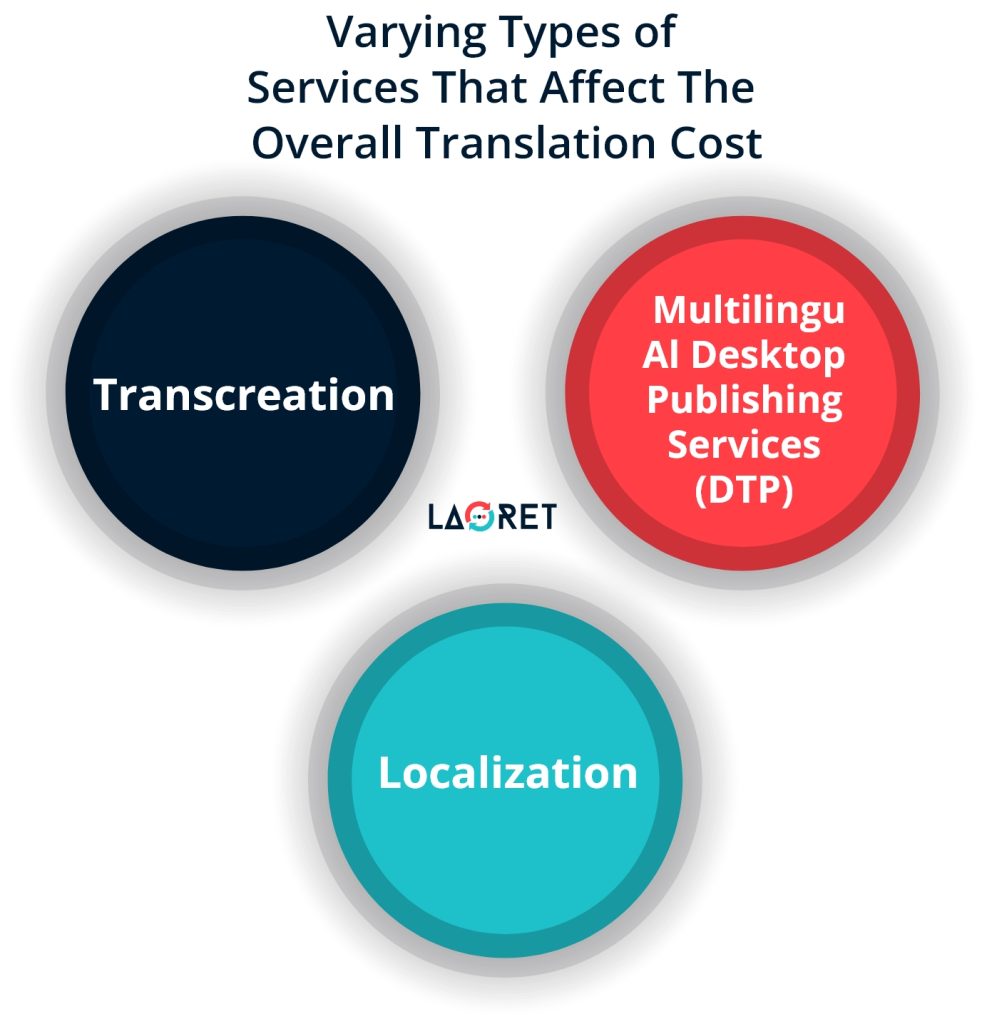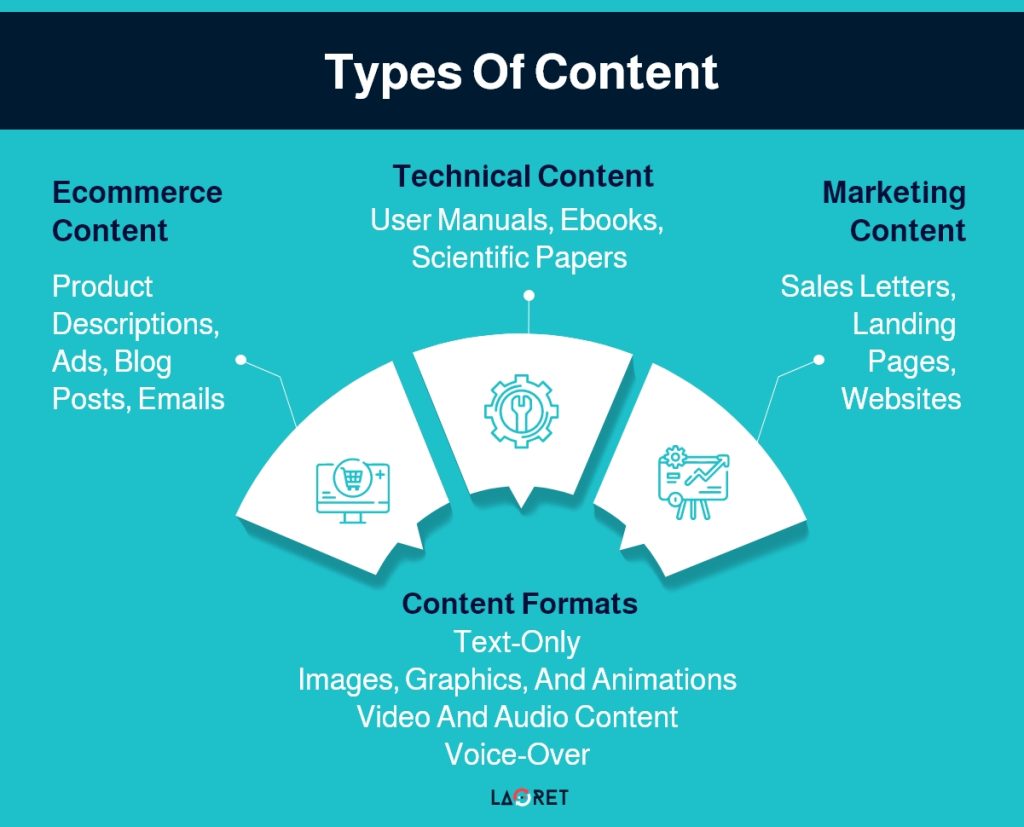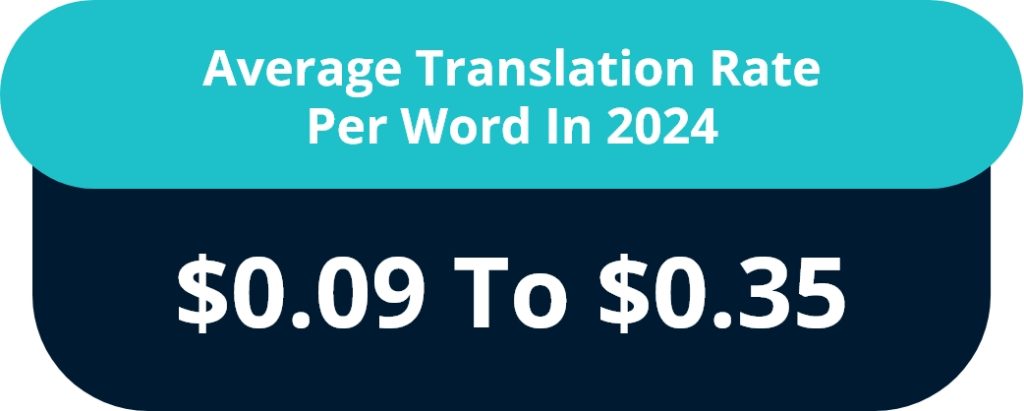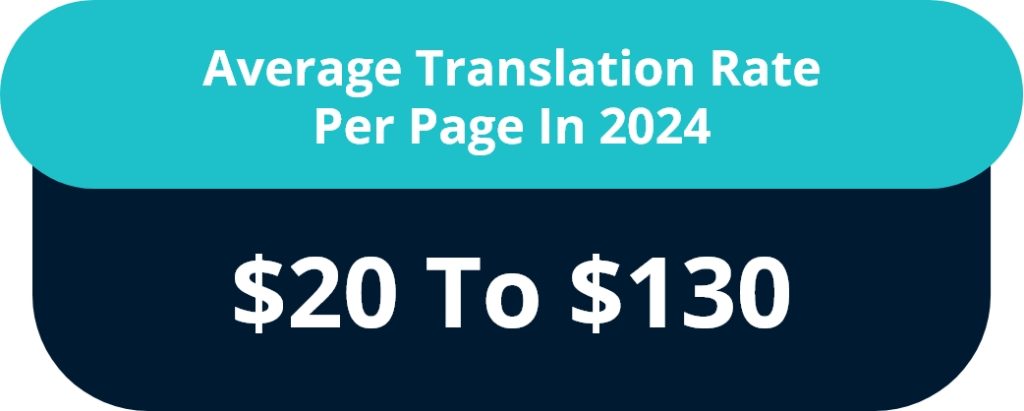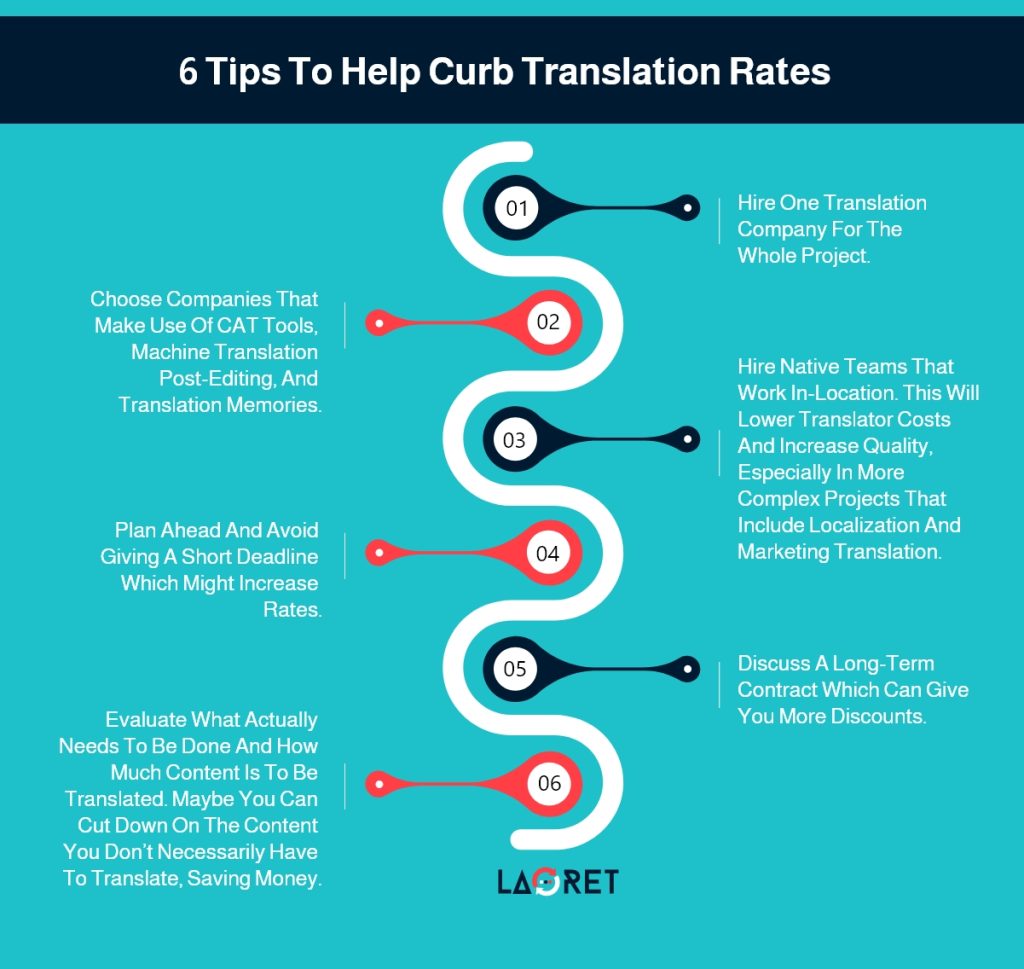The Cost Of Translation Services Guide For 2024
The cost of translation services is often the first concern that arises when starting a business in a new country and expanding internationally. While the fear of high translation fees holds some companies back, going global has proved hugely rewarding for those who invest strategically.
But how can you evaluate options and allocate resources properly without knowing the full picture of pricing factors? Wouldn’t it help to know what really affects the price?
With a clear picture of what translation industry costs depend on, you can feel more confident choosing providers. You’ll know what you need to get the most benefit from language services for your growing business!
This blog will provide you with a roadmap to help make confident decisions and learn how the cost of professional translation services relies on various factors.
Let’s start!
Table of Contents:
[/text]Factors Influencing The Cost of Translation Services
Translation services are too broad of a term because it might mean translating a letter, a website, or a book each of which varies in terms of length, style, and complexity. A travel agency’s website translation cost, for example, is lower than that of a SaaS website since the latter is more specialized and technical.
But that’s just one of the variables at play! Knowing what you can afford and how much you should spend for your localization and translation project is paramount to its success and understanding all these factors will help you estimate the scope of your project.
So, let’s go through the many different parts of translation services that determine translation rates.
Type of Service Provider
When it comes to determining the cost of translation, Who does the work is the first thing determining translation price- a freelancer or a company? Generally, companies charge higher rates than freelancers. Here is why!
- Companies have to account for higher fixed costs like office rentals, insurance, HR costs, accounting, IT infrastructure, etc. that freelancers don’t have. This gets passed on in rates.
- Companies implement thorough QA procedures like multiple reviews/edits, specialized QA tools, and rigorous project management which adds cost but ensures higher quality output.
- They employ domain experts to handle technical content more reliably due to specialization. This specialized expertise comes at a higher price point.
Type of Project
The type of translation project can significantly impact the overall cost, as different project types require varying levels of linguistic and non-linguistic services. For instance, a straightforward text translation between popular languages may only require a basic translation service, which typically involves the average cost-per-word rate.
However, projects that involve adapting content across cultures through localization and transcreation, or incorporating design and formatting through desktop publishing (DTP), become more specialized and complex, thus charging higher per-hour rates.
Simpler translation projects are generally the most affordable. The rates increase if a project requires cultural adaptation, advanced formatting, or specialized software work. Thus, the type of translation project makes a significant difference to the budget.
Language Pairs
The language pair also helps determine the cost of translation services, for example, English to Spanish is fairly cheaper than Turkish to English. As a general rule of thumb, less common languages have higher translation costs.
English, for example, is the cheapest language to translate to because it has a high supply as well as demand. Japanese, on the other hand, has a higher cost since it doesn’t have as high of a translator supply as English.
Click here to check if the languages we cover include your target one!
Type of Content
In a similar vein, the subject matter and technical depth of the content greatly influence the cost. More complex and specialized topics requiring greater expertise, such as legal, medical, or technical translations, are more expensive compared to simpler content types.
For example, translating general travel content is less costly than medical content, since high-quality medical translation services require ultimate terminology accuracy and context comprehension by translators certified in medical domains. These specialized translators command higher fees compared to general translators, which in turn influences the overall cost of the service provided.
Project Turnaround Time and Deadline
The length of the project in relation to its size is one of the factors that can determine whether or not you stay within your estimated budget. If you give the translation company a short deadline, they will have to allocate more hours and more people to it, increasing the final cost.
Time is money, so if you want the project to be delivered faster, you’ll have to pay more. However, if budget constraints are a concern for your localization project, you might consider negotiating a more extended deadline in exchange for reduced rates.
Back translation & Additional QA Services
While every professional translation agency implements standard quality control procedures, some clients may request additional measures, such as back translation.
Back translation, which involves translating a document back into the original language to verify accuracy, adds an extra layer of review and ultimately cost, usually required for highly technical content like medical and legal documents.
While such services increase the project cost, they also provide a higher level of security and quality assurance, making them essential for critical documents
However the question remains unclear, how much should you expect to pay for a high-quality translation service provider?
Average Translation Rate Per Word
Translation pricing varies, but the most common method for calculating the cost of translation projects is the per-word pricing. It’s suitable for most types of content, including general texts, legal documents, marketing materials, and more.
Generally, the translation service provider uses word processing software to count the number of words and provide you with a cost-per-word rate based on the number of words in the source.
The average 2024 prices for translation services typically range from $0.09 to $0.35 per word, influenced by factors such as the project’s timeframe, complexity, and specific requirements. But keep in mind that this is just an estimate; it is better to get an exact quote since estimates can differ according to your unique project needs.
This method is ideal for text-based content, but alternative pricing models may be necessary for languages with non-Latin scripts, where words aren’t formed from singular symbols and glyphs, like Japanese, Chinese, Korean, and Vietnamese, or for non-text projects.
Translation Cost Per Page
Paying for translation based on the number of pages in your documents is more common than you might think. It typically happens often when the content is not text-only and includes a lot of images and graphics.
The translation agency may bill you based on the number of pages in the document since the project is more than a word-for-word translation.
Per-page translation rates typically fall between $20 to $130 in 2024. However, calculating costs per page can be tricky since the number of words on a page may vary significantly.
6 Tips to Help Reduce Translation Service Cost
Laoret, Your Optimal Translation Service Provider
Laoret is prepared to provide a no-obligation price estimate, allowing you to fully understand the translation processes, the extent of your project, and the budget involved, ensuring transparency with no hidden fees and the fastest turnaround times.
As a certified translation company, we prioritize the quality of our translation projects, with clarity as our primary objective.
We leverage the latest technology and make use of translation memory so we can maximize our translator’s productivity and in return offer you reasonable prices.


